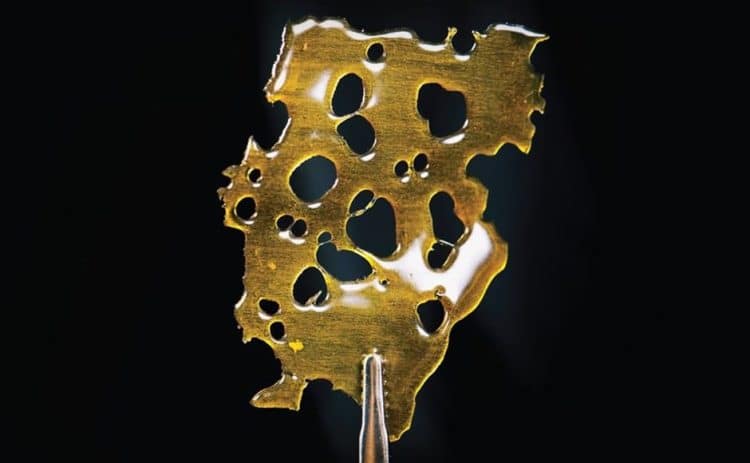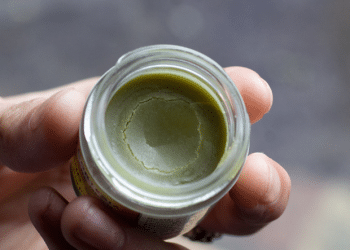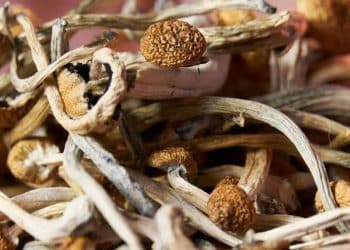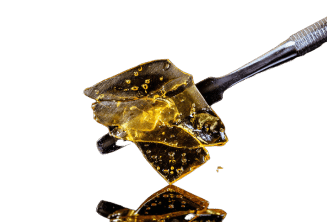The beauty of dry sifting is there’s no science, literally speaking, behind it. Rather, it’s a method of cannabis extraction, or more precisely, hands-on separation of the trichome heads from the cannabis plant material. Because of its manual nature and the lack of solvents and chemical interference, this method conjures up good, old-fashioned craftsmanship that is simpler and potentially safer. Something like the “what you see is what you get” of cannabis extraction. (1)
Nevertheless, like any extraction method, dry sifting involvesits tricky parts and the respective tricks of the trade to handle them like a master producer of dry sift, A.K.A kief, of the highest of qualities.
Process Overview
Rather than fancy, sci-fi-esque equipment and tools, dry sifting is done with screens with extremely fine mesh. They allow you to hand-sift the dried flower and mechanically remove the resin glands from the plant and thus target all the precious cannabinoids and essential oils which the trichome heads hold while leaving contaminants, non-glandular, and non-medicinal components like the capitate stalks behind.
The process requires patience, but in return, extractors have the invaluable chance to control the process on the fly and easily play with the final product’s terpene profile – a potential advantage over other extraction methods.
The Screens
Usually, dry sifting is done with three screens. Some use proportions like 140µm (microns), 107µm and 70µm, others prefer 160µm, 70µm and 45µm. The more widespread proportion is the first one, but the principle they operate on is the same.
Each screen weeds out smaller and smaller unwanted particles, each time sifting a purer, finer powder-like product. You can use a hard card of any sort to help the material strain through the screens. Whichever the screen you are using or its size, you need to be gentle and patient, sifting for a good few minutes before moving on to the next batch. Otherwise, not everything that’s meant to fall through the screen will separate and can thus get squandered. (3)
The process is the exact same for all three screens, with the only difference being the time you spend on each one – the finer the mesh, the more time needed to sift.
Types of trichomes
By knowing the types of trichomes in cannabis plant, you can better grasp the nature of the powder produced after each screen. (2)
Bulbous trichomes
These are the smallest and are around 20 µm in diameter in size. Some people like to smoke them in 45µm bubble hash, but in general, smaller than 70µm gland heads are considered of inferior quality. (3)
Capitate-sessile trichomes
These are between 25-100µm, mostly between 50-100µm. They are much more abundant than the bulbous trichomes and are the most common type. (4)
Capitate-stalked trichomes
These are also called glandular trichomes. They are the main producers of cannabinoids and terpenes. Their stalks are very large, between 150 and 500µm. Because they are the only type of trichomes that contains a layer of cells between the gland and the stalk, allowing for the easy detachment of their heads from the unwanted stalks, these trichomes are the most suitable for top grade hashish.
Additional Tips
Although the finer the powder, the less unwanted plant material it will contain, processing to achieve the finest kief can sacrifice some capitate-stalked trichomes. This is why the best kief is considered to fall within 70µm and 120µm. Furthermore, mixing the powders from different screens can heighten the organoleptic properties of the final product, diversify its terpene profile and trigger an entourage effect. It’s precisely this room for easy experimentation that constitutes one of dry sifting’s strongest appeals.
Another thing to consider is the temperature where dry sifting occurs. Colder temperatures are strongly preferred because they prevent the product from becoming sticky. Cold temperatures make trichomes more brittle and thus easy to break off from the plant. (1)
Dry sifting is a straightforward, artisanal method to produce diverse and potent products which can easily be altered to individual preferences. The products, created this way, carry the distinctive feel of old-school craftsmanship which feels especially sweet in today’s era of technology advent. If you have some time and patience on your hands, you can also get a hold of something pure and unique.
References:












